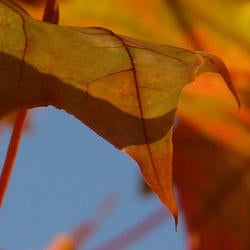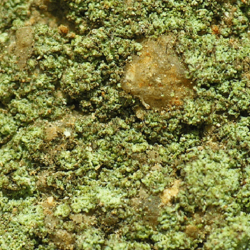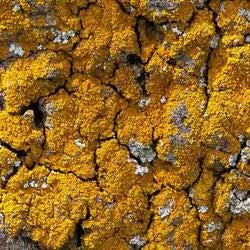Welcome to the Databases hosted by the UCR Herbarium
The UCR Herbarium has seen major changes in the way we now serve our Herbarium Inventory data. For those of you familar with our previous Web site you will be happy to know we have greatly simplified your ability to get access to our Herbarium data.
Starting in 2019 we began to load our entire Inventory data to the newly created (Consortium of California Herbaria) CCH2 Web site. In addition to the textual information we are in the process of imaging 100,000 of our specimens with ultra high quality imagery. Our goal in the coming years will to be to image our entire inventory collection of over 275,000 specimens! Below you will find a link and additional information about our data on CCH2. Please take a few minutes to review this new site, and if you have any questions for us you can reach out to us, go to the Contacts section of our new Web site for information how to contact us.
Welcome to the Consortium of California Herbaria Portal (CCH2)
CCH2 serves data from specimens housed in CCH member herbaria. The data included in this database represents all specimen records from partner institutions. The data served through this portal are currently growing due to the work of the California Phenology Thematic Collections Network (CAP-TCN). This collaboration of 22 California universities, research stations, natural history collections, and botanical gardens aims to capture images, label data, and phenological (i.e., flowering time) data from nearly 1 million herbarium specimens by 2022. Data contained in the CCH2 portal will continue to grow even after this time through the activities of the CCH member institutions.
For more information about the California Phenology TCN, visit the project website:
https://www.capturingcaliforniasflowers.org
For more information about the California Consortium of Herbaria (CCH) see:
http://ucjeps.berkeley.edu/consortium/about.html
The California Phenology TCN is made possible by the National Science Foundation Award 1802312. Any opinions, findings, and conclusions or recommendations expressed in this material are those of the author(s) and do not necessarily reflect the views of the National Science Foundation.
Special thanks to the National Park Service who provided funds for the initial setup of the CCH2 website and database (November 2016).
Note also these other portals that will better serve the data needs of more-specialized users:
California vascular plants - CCH1: For California vascular plants linked to the statewide flora project (the Jepson eFlora: http://ucjeps.berkeley.edu/eflora/), please see the original the CCH1 portal (active since 2003).
Pteridophytes: For world-wide ferns, lycophytes, and their extinct, free-sporing relatives, see the Pteridophyte Collections Consortium (PCC). The CCH2 taxonomic thesaurus has been augmented based on the Checklist of Ferns and Lycophytes of the World, generously provided by Michael Hassler (who also supplied these data for the PCC Thesaurus).
Macroalgae: For algae specimens, see the Macroalgal Herbarium Consortium Portal.
Brytophytes: For bryophyte specimens, see the Consortium of North American Bryophyte Herbaria (CNABH).
Lichens: For lichen specimens, see the Consortium of North American Lichen Herbaria (CNALH).
Fungi: For fungi, see the Mycology Collections data Portal (MyCoPortal).
Database History
The data entry work was supported by financing from the National Science Foundation, the UCR Center for Conservation Biology, and contributors to the herbarium "various donors" account. The people who actually did the work include Teresa Salvato, Brandon Mattrux, Trinity Ryan, Melissa Mattrux, Kyle Boyd, Loni Bachor, Chris Glover, Mitch Provance and others. Barbara Pitzer made the first entries in the earliest version of the system back in 1988 and was actively involved, a key person, in the whole process until she became ill and eventually passed away in Sept. 2002. Her interest and commitment kept the process moving during times when no outside funding was available. Andrew Sanders, the curator, watched over the whole process and did some entry as well. The data structure was developed by Ed Plummer and Andrew Sanders with interaction with the Rancho Santa Ana Botanic Garden herbarium (RSA), which had adopted the UCR database structure for a long time.
Note on names
Records are entered under the names under which the specimens are filed at UCR. In some cases, this does not reflect the useage in the most recent regional floras. These divergences can be either the result of our not having updated a particular genus (rare) or of our consciously not using some recently used name (common). For example, we do not use either the names Chamaesyce or Vulpia because it is the curator's opinion that use of these genera would leave Euphorbia and Festuca as paraphyletic groups. In general, we probably tend to err on the side of broader circumscription of genera and narrower delimitation of species. Our families are mostly traditional and rather broad. The "lilioid" monocots are all treated in a very broad Liliaceae, largely out of exasperation with the instability of the classification of these plants. Once things settle down, we'll adopt some more modern system. We always use the family names with the "-aceae" ending and the vascular family names are abbreviated using the system of acronyms proposed by Robert W. Kiger and James L. Reveal in collaboration with the Hunt Institute for Botanical Documentation. We have tried to keep the nomenclature straight so that at least each species is filed under only one name, but in some cases (especially across state/published flora boundaries) a species may be filed under synonyms in different genera. You would do well to check under major recently used names when searching the name fields.
Web-interactive Database Interfaces
Search-Form-based DB Interfaces
Please email us if you notice any corrections that need to be made.



